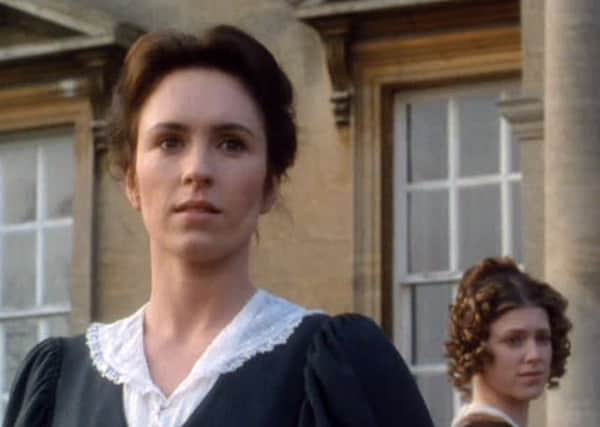Book review: The Road to Middle-


The Road to Middle-
march: My life with George Eliot
Rebecca Mead
Granta, 304pp, £16.99
Of the few there have been – Nicholson Baker’s U and I, and Geoff Dyer’s Out of Sheer Rage among them – the memoirist’s shadow figures largely on the text.
Rebecca Mead’s My Life in Middlemarch is, by contrast, a beguilingly straightforward, resolutely orthodox and unshowy account of her lifelong admiration for George Eliot and for Middlemarch in particular – the novel Virginia Woolf once described as “one of the few English novels written for grown-up people.”
Advertisement
Hide AdThere is no irony or postmodernist posturing in Mead’s forthright, unequivocal and unwavering endorsement of George Eliot as both a great novelist and a role model for bright, ambitious, provincially born girls like herself, eager to escape their intellectually impoverished hometowns – “Oxford was my immediate goal, but anywhere would do.” When Mead first read the book aged 17, her identification with Eliot’s 19-year-old heroine, Dorothea Brooke, was immediate and unqualified, and it lasted for decades. The book’s theme, “a young woman’s desire for a substantial, rewarding, meaningful life,” was “certainly one with which Eliot had been long preoccupied And it’s a theme that has made many young women, myself included, feel that Middlemarch is speaking directly to us. How might one contain one’s intolerable, overpowering, private yearnings? Where is a woman to put her energies? How is she to express her longings? What can she do to exercise her potential and affect the lives of others?”
Today such earnest questions are more likely to be found in young adult fiction, but Victorian writers took seriously their duties, as Mead puts it, to “instruct and enlighten.” Contemporary readers will notice how financial worries aren’t part of the picture. They will also see the impossibly pompous, pedantic and self-deluded pseudo-scholar Edward Casaubon, whom Dorothea marries, as a caricature lacking in subtlety. And today’s feminist readers might also wonder why Dorothea chooses marriage – and then remarriage – in place of a couageously ambitious life of her own. It’s as if Eliot didn’t dare to end the novel beyond the “marriage plot” – the formulaic conclusion to conventional romances Eliot derided in her essay “Silly Novels by Lady Novelists.”
Drawing on numerous biographies of Eliot, Mead’s book is an exemplary introduction to the work of George Eliot. Her curiosity about the ill-fated friendship of George Eliot and Herbert Spencer, the historical origins of the mismatched Dorothea and Edward Casaubon and the relationship between Eliot and the infatuated Scots “fan” Alexander Main provide emotional ballast. Of the gushingly enthusiastic letters Eliot received from young women, Mead says reprovingly: “Such an approach to fiction – where do I see myself in here? – is not how a scholar reads, and it can be limiting in its solipsism.”
Mead is so reverent about her magisterial subject, and Eliot so solemn about the duties of the novelist to “enlarge sympathies” in her readers, that it’s a welcome surprise when the young Henry James arrives on the London scene to brashly proclaim Eliot as “magnificently ugly – deliciously hideous. She has a low forehead, a dull gray eye, a vast pendulous nose, a huge mouth, full of uneven teeth and a chin and jawbone qui n’en finissent pas.” Yet this first, crude impression is soon amended: “I ended, in falling in love with her ... Yes behold me literally in love with this great horse-faced bluestocking.”
The most evocative passages in the book are those in which Mead hints at parallels between Eliot’s domestic life as a loving stepmother (to the sons of her longtime companion, the critic George Henry Lewes) and her own marriage to a man with children from a previous marriage: “From where I stand in the middle of my own home epic – my own mundane, grand domestic adventure, in which I attempt to live in sympathy with the family I have made – I now look upon the accomplishment of early-dawning, long-lasting love with something like awe.” Not youthful romance but mature, abiding love amid the life of the everyday is, as Mead sees it, Eliot’s great subject. Middlemarch gives Mead’s parents (who were married for nearly 60 years) “back to me.”
Mead’s book is a poignant testimony to the abiding power of fiction: “I have grown up with George Eliot. I think Middlemarch has disciplined my character. I know it has become part of my own experience and my own endurance. Middlemarch inspired me when I was young, and chafing to leave home; and now, in middle life, it suggests to me what else home might mean, beyond a place to grow up and grow out of.”
Advertisement
Hide AdUltimately, though, does George Eliot, wonderful as she is, and certainly comforting in the unwavering sanity of her narrating voice, stir us to an awareness of the actual world like Kafka? Doesn’t the radiantly gifted Charles Dickens transcend his Victorian contemporaries, including Eliot? Are not the radically experimental novels of Virginia Woolf more exciting, simply as aesthetic experiences? Like her genteel predecessor Jane Austen, George Eliot gives the impression of being utterly oblivious to the physical, physiological, sexual lives of women; Hardy or even DH Lawrence is far more insightful in the relations of the sexes. Eliot is a novelist to place not above but among these, in the extraordinary richness of 19th- and early-20th-century fiction.